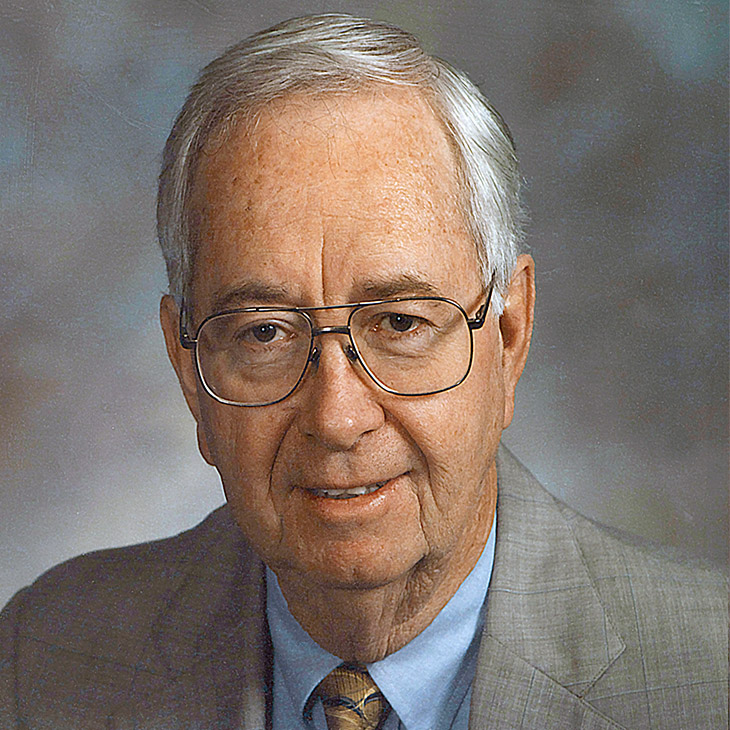
In honor and memory of Harold Mace
Friday, October 11, 2024
Media Contact: Kristi Wheeler | Manager, CEAT marketing and Communications | 405-744-5831 | kristi.wheeler@okstate.edu
The College of Engineering, Architecture and Technology mourns the passing of Fire Protection Publications Emeritus Director Harold Mace.
Mace was director of FPP for 23 years and led a number of initiatives to improve firefighter training worldwide. Mike Wieder, IFSTA executive director reflected: “We lost a true icon in the American fire service. Harold was an amazing leader, mentor and friend to so many people. His impact will continue on.”
Mace was born in Oklahoma City, Oklahoma, on May 23, 1939. He earned undergraduate and graduate degrees in education from what was then Central State University in Edmond.
In 1969, he was hired as the special assistant to Dr. Monroe Kriegel, director of extension in what was then the School of Engineering at Oklahoma State University. He was assigned to serve as the acting supervisor of Oklahoma Fire Service Training, housed in engineering Extension at OSU. His outstanding leadership and administrative skills enabled him to develop FST into a robust modern training program in a relatively short period of time. He was responsible for the initial construction of FST’s first full-scale practical training facility. FST became an accredited training organization during Mace’s tenure.
Realizing the extraordinary leadership ability Mace possessed, Kriegel soon placed him in charge of Fire Protection Publications, publisher of the textbooks developed by the International Fire Service Training Association. Both FPP and IFSTA experienced enormous growth under Mace’s leadership. During his tenure, IFSTA formalized its organizational status and initiated an Executive Board to oversee its operations.
Under Mace’s leadership, FPP grew from an organization with a small handful of employees to a modern, professional publishing organization with more than 40 employees and $5 million dollars in annual sales at the time of his retirement. It is because of Mace’s leadership that IFSTA-FPP grew to be and remains the world’s largest publisher of firefighter training materials.
Mace became a dynamic leader of the fire service on the national level from the very beginning of his career at OSU. He was instrumental in the formation and operation of the Joint Council of National Fire Service Organizations and the National Professional Qualifications Board. He was actively involved in the Joint Council’s development of a national professional qualifications standards and certification system. In 1972, he was named chairman of the National Fire Protection Association’s first Fire Fighter Professional Qualifications Committee.
In 1986, Mace was appointed department head of the School of Fire Protection and Safety Engineering Technology, in addition to his duties as director of both FPP and FST. The legendary academic program, dating back to 1937, has produced many of the nation’s top leaders in both the industrial and municipal fire protection fields. Under Mace’s leadership, the school increased its enrollment from 60 to nearly 200 students within three years of his appointment, added faculty members, instituted an advisory board, and enjoyed large growth of alumni support and financial donations.
Just prior to his retirement in January 1992, Mace initiated the formation of the International Fire Service Accreditation Congress. Building on the framework he developed, IFSAC would become the largest fire service accreditation program in the world.
In 2017, Mace was the 50th inductee to the National Fire Heritage Center’s Hall of Legacies, Legends and Leaders. In addition to the incredible list of professional accomplishments listed above, perhaps Mace's greatest achievements are as mentor to several generations of national fire service leaders. His influence on the many students and employees who passed through the OSU system during his tenure, as well as the numerous IFSTA participants and other fire service members with whom he interacted, continues to be reflected in their leadership of the fire service today.
